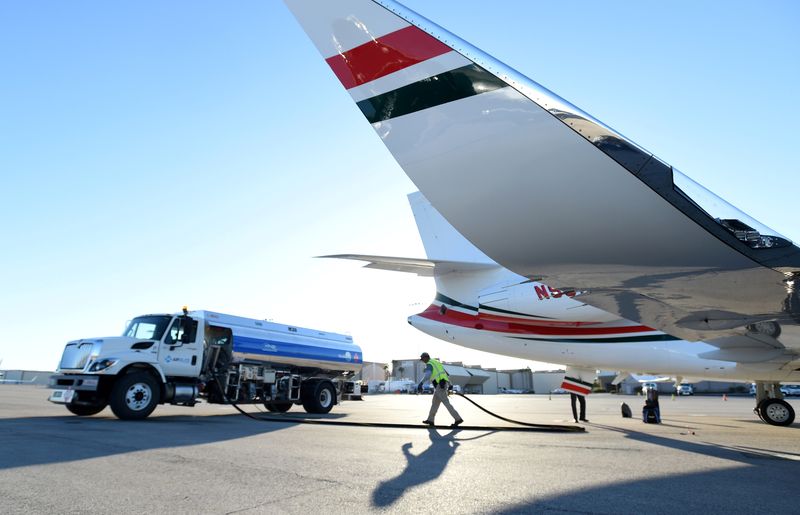By Laura Sanicola
(Reuters) -Jet fuel prices are soaring on the U.S. East Coast, home to some of the world's busiest airports, with buyers anticipating a worsening shortage as supply dwindles amid sanctions on Russian energy exports.
Following Moscow's Feb. 24 invasion of Ukraine, the United States and allies slapped heavy sanctions on Russia, leading to a tightening in worldwide energy markets. Russia is the world's largest exporter of crude and petroleum products, and the supply crunch is filtering through to global markets.
The East Coast largely relies on shipments on the Texas-to-New Jersey Colonial Pipeline for refined products, as well as imports from Europe. However, Europe is dealing with its own supply strains, so distillate exports to the U.S. East Coast - also known as PADD 1 - are down nearly 60% on a year-on-year basis, according to Refinitiv Eikon data.
East Coast jet fuel costs have reached record highs in recent days, with spot prices in New York Harbor exceeding $7.30 per gallon on Monday, more than double the seasonal average, according to Refinitiv Eikon data.
"It is ridiculous what's going on in PADD I with jet, and it's not sustainable," said Patrick DeHaan, lead petroleum analyst at GasBuddy.
HIGH MARGINS
Refiners spent most of 2020 blending excess jet fuel into their diesel pool or refining it further into gasoline as the coronavirus pandemic severely hit air travel. Demand for jet fuel is now about 5% below 2019 levels, according to data from the U.S. Energy Information Administration.
But U.S. distillate inventories, which include heating oil and jet fuel, are currently about 20% below the average for the 2015-2019 pre-pandemic period, compared with deficits of 11% in crude and 1% in gasoline.
Western European refiners are unable to fill the gap in supply due to their own constraints - Russia is a major exporter of distillates like jet fuel to Europe.
Some of the U.S. East Coast deficit results from problems in California, where in recent weeks a Chevron Corp (NYSE:CVX) refinery and a PBF Energy (NYSE:PBF) Inc plant experienced malfunctions with fuel-producing units, according to people familiar with the matter.
U.S. trading partners in Asia and the Middle East prefer to send barrels to the U.S. West Coast instead of the East Coast, according to Zachary Rogers (NYSE:ROG), director of refining and biofuels at Rapidan Energy Group.
The spread between U.S. heating oil and crude futures is $43.55, compared with $15.50 a year ago, according to Reuters data. Jet fuel is heavily aligned with heating oil as they are both middle distillates.
"Margins are higher than I've ever seen them, so high prices are great for any refinery that's not malfunctioning," said one West Coast refinery worker.
Relief could arrive in the coming weeks as West Coast refining capacity rebounds and the Biden administration approves waivers to the Jones Act - which requires shipments from one U.S. port to another to be via U.S.-flagged vessels - for barrels to move to the West Coast, Rogers said.
"That could be a real game changer to bring down prices, making this a more temporary event," Rogers said.

The quickest cure for higher fuel prices might be Americans choosing to use less of it, according to John Auers, a U.S. refining consultant who spoke on a call hosted by a U.S. oil lobby on Monday. But that could be bad for the U.S. economy, he said.
"We're trying to prevent that outcome," Auers said.